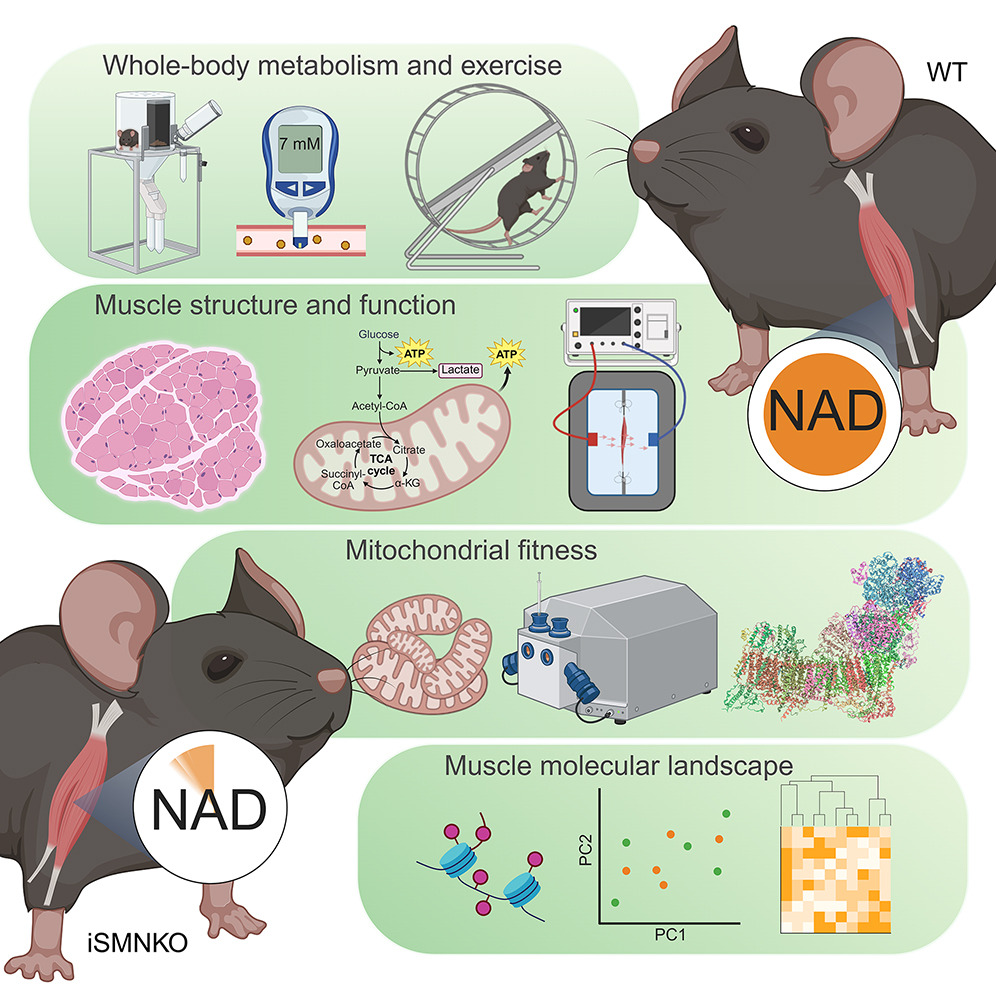Time to bin your supplements? Low levels of NAD+ may not drive aging
Mice retained normal muscle function and health even though their NAD+ levels were reduced by 85%, according to new research from the Treebak Group. Given that NAD levels drop by only up to 30% through ageing, the findings challenge the health benefits claimed by supplement companies.

In his recent Netflix documentary, Don’t Die: The Man Who Wants to Live Forever, tech millionaire Bryan Johnson reveals that he includes NAD precursors in his expansive supplement routine, totaling more than 50 pills a day. There’s a good reason for that – NAD is an essential molecule that cells use to generate energy and many other vital cellular processes. Levels in skeletal muscle decline by up to 30 percent with age, which has led to speculation that NAD supplementation can support health and counteract ageing.
New research from the Treebak Group from the NNF Center for Basic Metabolic Research at the University of Copenhagen suggests that it may be a waste of money. In a study published in the journal Cell Metabolism, scientists found that reducing skeletal muscle NAD+ levels in mice by 85 percent did not accelerate aging or impair whole-body metabolism.
“Our results suggest that skeletal muscle can tolerate substantial NAD depletion without loss of function or accelerated aging,” says Associate Professor Jonas Treebak, corresponding author of the study that was published in Cell Metabolism. “This challenges the prevailing view that NAD+ decline is a primary driver of muscle aging and frailty.”

NAD helps mitochondria in cells produce energy in the form of ATP. However, scientists do not fully understand the extent to which the decline in NAD affects mitochondrial function and aging in general. For example, how low can NAD levels drop before an effect can be noticed?
Healthy skeletal muscle function not reliant on high NAD levels
To study these questions, the scientists created a special type of mouse whose NAD levels could be reduced specifically in skeletal muscle after they became adults. This allowed the scientists to test the effect on mature muscle, avoiding any confusion with how NAD might affect muscle as it develops.
Even though these mice had much lower NAD in their muscles, their muscle size, overall health, strength and exercise performance were all normal. Detailed studies of the cell’s genes, proteins, mitochondria and DNA markers, called DNA methylation, remained normal despite the low NAD levels.
While the mice with low muscle NAD did show increased energetic stress during exercise and some minor changes in how they processed energy, the overall markers of their whole-body and muscle health stayed the same as regular mice, even after they lived their entire lives with low muscle NAD.
“Contrary to what might have been expected, healthy skeletal muscle function is not as reliant on high levels of NAD as previously thought. Importantly, our findings indicate that reducing muscle NAD levels well beyond the modest drops seen with normal aging does not cause muscle weakness or make the muscle age faster,” says Sabina Chubanava, who carried out the research as a PhD student and Postdoc in the Treebak Group.
Read the article in Cell Metabolism: NAD depletion in skeletal muscle does not compromise muscle function or accelerate aging
Altmetrics
Contact
Associate Professor Jonas Treebak
NNF Center for Basic Metabolic Research
University of Copenhagen
jttreebak@sund.ku.dk
